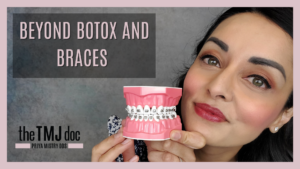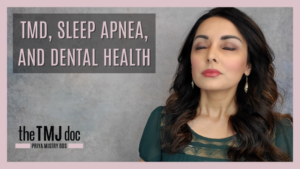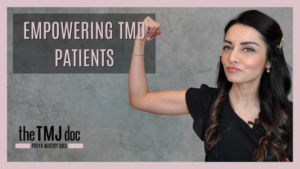In another insightful episode of The Unclenched Podcast, Dr. Priya Mistry—the TMJ Doc—offered an in-depth look into the “why” behind TMJ orthotics. This episode focused less on patient questions and more on clarifying the purpose and process of orthotic therapy: how it works, what it changes, and why it matters for long-term relief.
Orthotic Therapy: A Path to Healing, Not a Quick Fix
Dr. Mistry emphasized that TMJ orthotics aren’t just about providing temporary comfort. They are designed to change the physiology of the jaw joints and surrounding muscles. Orthotic therapy doesn’t simply manage pain—it helps move the joints into a healthier position, retrains muscle memory, and improves function over time.
A well-fitted orthotic allows the joints to glide more freely, reduces inflammation, and helps the body find a more stable, comfortable bite. It’s an active treatment phase that addresses root causes—not just symptoms.
Muscle Memory and Jaw Position: Why Time Matters
Many patients ask, “How long do I need to wear my orthotic?” Dr. Mistry explained that it typically takes at least three months for muscle memory to begin adapting to the new jaw position. During this time, patients wear the orthotic 22 hours a day, only removing it to eat or brush.
This consistent wear time is essential because the brain and muscles must be re-trained to accept and maintain the improved jaw alignment. Occasional or inconsistent wear compromises results and prolongs treatment.
From Inflammation to Balance: The Orthotic’s Role
TMJ disorders often stem from inflammation, joint compression, muscle overuse, and misalignment.
Orthotic therapy addresses each of these issues simultaneously:
- Decompresses inflamed joints
- Balances the bite
- Relieves overworked or tense muscles
- Improves overall jaw function
By restoring balance and decompression, the orthotic gives the body a chance to heal itself—and patients often start noticing a reduction in symptoms like pain, clicking, popping, and even headaches.
The Need for Phase Two Treatment
While orthotics offer significant relief, Dr. Mistry reminded listeners that this is just Phase One. Once the joints and muscles have stabilized, Phase Two is necessary to maintain long-term changes.
This may include:
- Neuromuscular orthodontics
- Bite reconstruction
- Crowns or veneers
Without Phase Two, the bite may revert to its old patterns, causing symptoms to return. Dr. Mistry likened it to wearing a cast on a broken leg—once the bone heals, you still need rehab to regain strength and mobility. Orthotics get the jaw outof pain, but Phase Two keeps it that way.
What If the Orthotic Causes New Discomfort?
Occasionally, patients feel new or different discomfort after starting orthotic therapy. Dr. Mistry advised that this can be a good sign—it often means the muscles and joints are starting to shift into new positions. Adjustments are sometimes needed, and her team closely monitors each patient’s response during follow-up appointments.
A Word of Encouragement
Dr. Mistry understands how frustrating and isolating TMJ pain can be. Her message to patients: You’re not alone, and this pain is not in your head. With the right tools—like an expertly crafted orthotic and a personalized treatment plan—relief is within reach.
Final Thoughts
Orthotic therapy is more than just a dental appliance—it’s a step toward real, lasting healing. By addressing inflammation, improving muscle balance, and retraining the jaw, orthotics lay the foundation for a healthier bite and a pain-free life. As Dr. Mistry says, “When your jaw is in the right place, everything works better.”
Dr. Priya Mistry is a leading TMJ-focused dentist based in Vancouver, WA. Through her practice, TMJ Dental Doc, she provides non-invasive, neuromuscular treatment for patients suffering from jaw disorders, chronic headaches, and facial pain.






